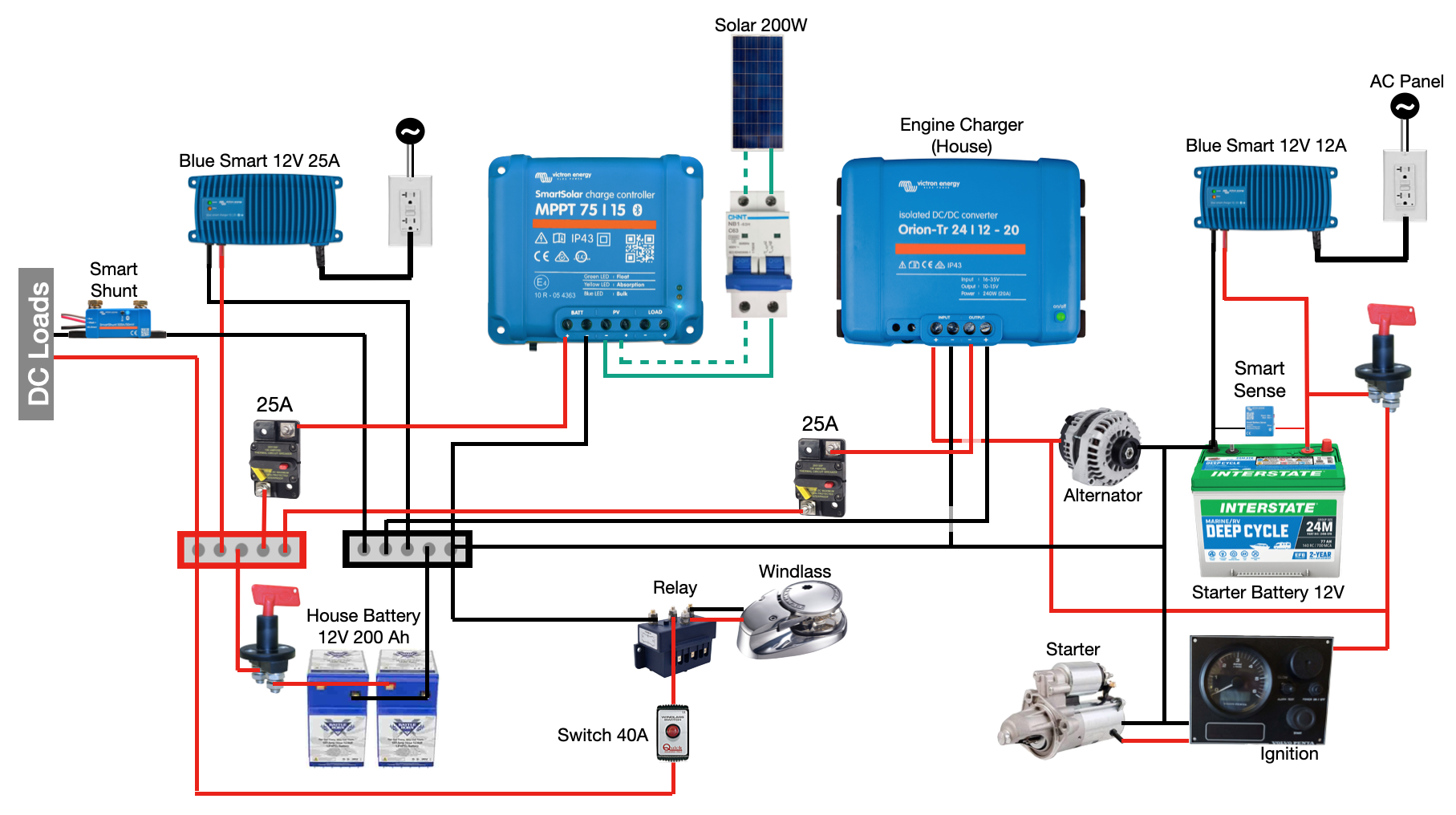Hello,
I am designing an upgraded electrical system for my 32' sailboat to LiFePo4 batteries with built-in BMS. If anyone would be willing to review/provide feedback, I would really appreciate it. This design does not incorporate a multi-plus that is in many of the example designs. This is due to limited space, but if it's required please let me know, and maybe I can cram it in somewhere! Thanks!
My main question is how to best control the Orion so that I don't drain the starter battery. I have a Cerbo GX (not shown), maybe this can monitor the starter voltage to shut it off below a certain voltage? Or I could wire a manual switch to turn it on when the engine is running I guess too.

